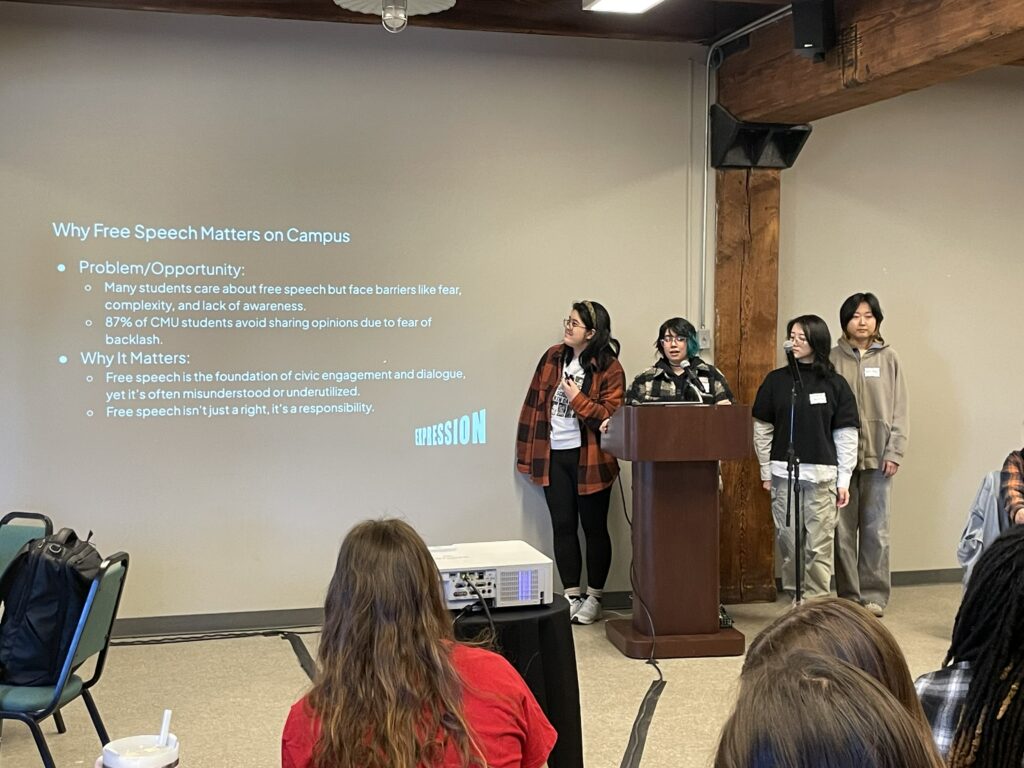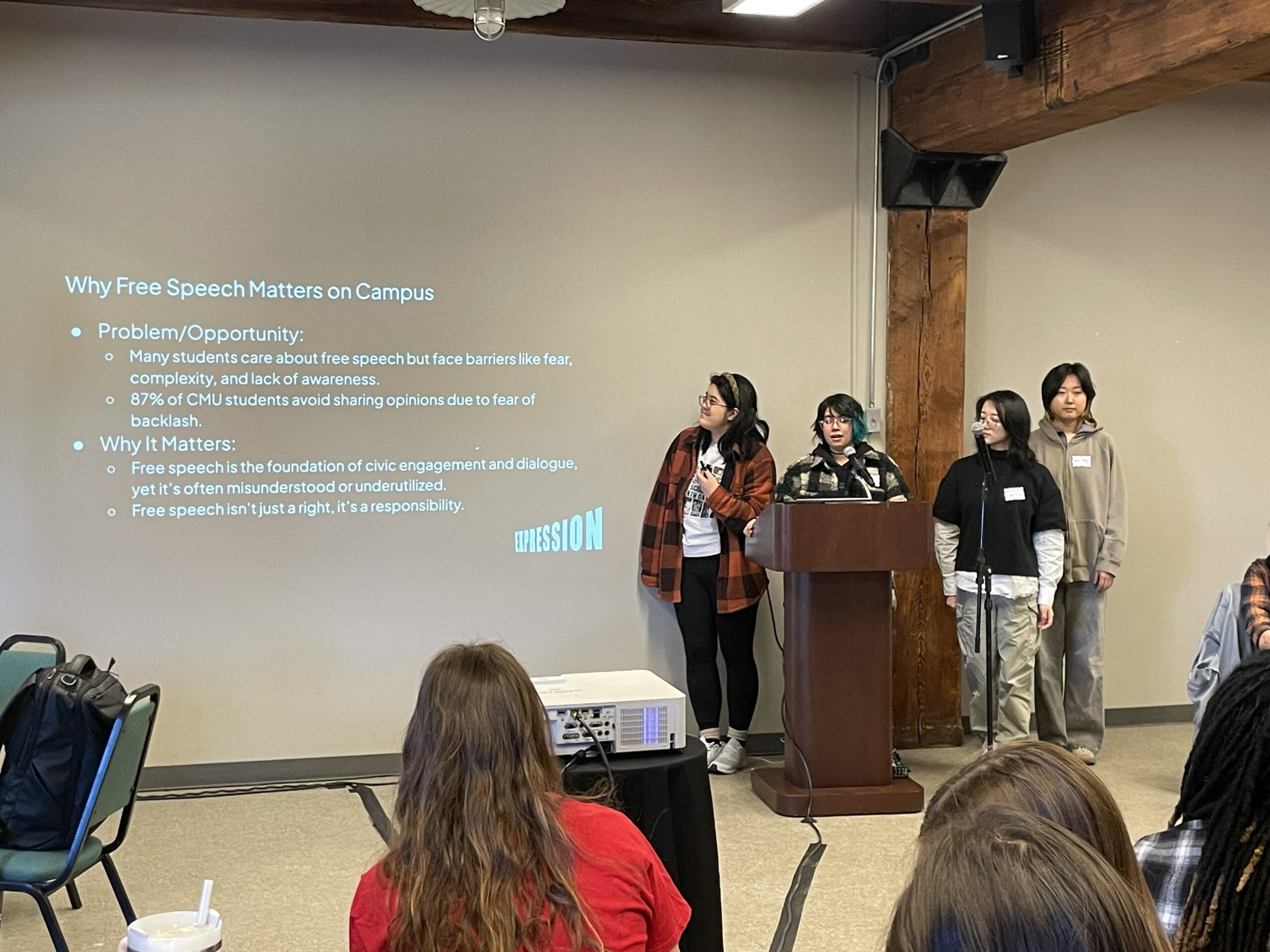Post-Half Feedback & Reflection
Following our Half Presentation, we received a wide range of feedback—both encouraging and critical. Many reviewers praised our project for tackling a timely and important topic—freedom of speech—through a creative lens such as a dating sim.
Positive Highlights
- Many liked the direction and concept, particularly our character designs and how their personas clearly connect to speech policies.
- Some also highlighted our use of audience surveys and our effort to connect characters to real-world speech policies as a strong foundation.
- Several found the aesthetic charming and engaging, with some suggesting we push the character exaggeration even further for stronger contrast.
Critical Feedback
- Some felt the presentation moved too quickly, and certain visuals were hard to interpret.
- There were concerns about lack of specificity in gameplay mechanics and how transformation would be achieved through the experience.
- Some questioned whether the dating sim format was appropriate for such a serious topic, and pointed out that our characters could benefit from greater visible diversity.
- Faculty wanted to see concrete examples of the narrative and game loop, even if in a simple format like Google Docs or Twine.
Our Reflections
During our presentation, we intentionally spent more time on the transformational goal and core themes to emphasize the depth of our intent. However, this left less time for demonstrating gameplay or story details, which created confusion among some faculty. We realized in hindsight that we overlooked the information gap—we knew the story, but the audience didn’t. For a narrative-driven game, communicating the story clearly is essential, and we’re taking this feedback to heart for future presentations.
There were also valid concerns about the project’s scope and whether we could complete everything without a more iterative approach. After discussing with our advisors and faculty, we agreed to reduce the in-game timeline from six days to two, making the story tighter and more manageable. Our narrative designer restructured the arc to preserve motivation and progression within a fictional yet coherent framework.
Civic Learning Showcase
We also participated in the Civic Learning Showcase this week, where we introduced our project to a wider audience beyond our immediate academic circle. The response was encouraging—many attendees expressed genuine interest in our game concept and volunteered to participate in future playtests. This event allowed us to expand our network and begin forming a small community of external testers we can reach out to in the coming weeks.

Key Takeaways & Next Steps
Two points stood out clearly from all the feedback we received: we need to test early and often with CMU students, and we must demonstrate gameplay interactions that showcase both narrative and transformational depth. We’re now taking steps to address these by borrowing structural ideas from legal/logic-based games like Phoenix Wright, and by preparing to playtest early versions of our dialogue and scenes to assess tone, clarity, and engagement.
Team Progress & Adjustments
Some team members were away this week attending conferences, which slightly slowed progress. Nevertheless, we are continuing to move forward with a more focused scope and a sharper understanding of our priorities.
- The narrative team is working on trimming unnecessary side stories and deepening character development.
- The 2D art team is enhancing character sprite sheets with a range of expressions and gestures.
- The UI/UX designer is collaborating with the programmer to refine the core interaction design and visual layout.
We’re making steady progress, and with a clearer direction post-Half, we’re excited to dive deeper into development and testing in the weeks ahead.
